The Retail Design Institute celebrated the best creative use of a retail space on Tuesday 18 October with their 2011 Awards.
October 20th, 2011
As retailers experience drops in sales and bemoan the rise of online shopping, it becomes evident that the future of physical retail depends heavily on the design of the store itself and its ability to provide something new, personal and enticing for shoppers.
The Retail Design Institute Awards, announced at an event at the InterfaceFLOR showroom on Tuesday 18 October, sought to recognise those stores and window displays that created a unique experience for visitors.
“The future of retail has so much to learn from the idea of the communal experience and making the shopping experience human once again,” said e-2’s Alex Ritchie, the MC for the evening and himself an expert on brand-focused experiential environments.
“All this adds to creating a ’return on experience’ for the shopper and therefore drives loyalty and repeat visits.”
Third place at the Awards went to Hunter Gatherer by DEA Australia, a brand new store in Melbourne’s Royal Arcade.
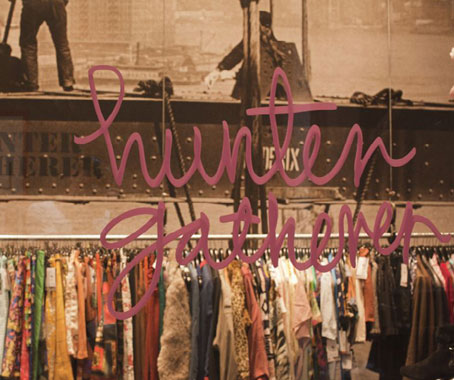
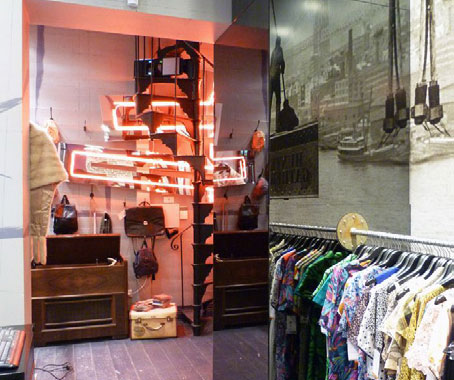
More than just a second-hand clothing store, Hunter Gatherer hand-picks each of its items, stocks jewellery from local artisans and partners with emerging Melbourne designers to create upcycled garments from donated clothing that can’t otherwise be used.
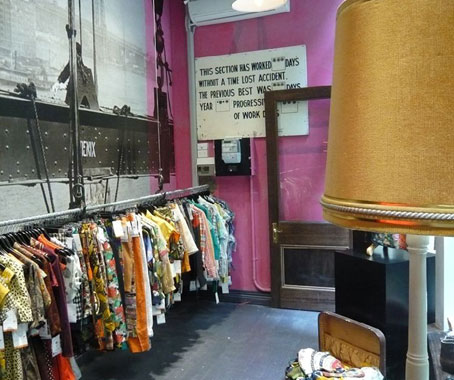
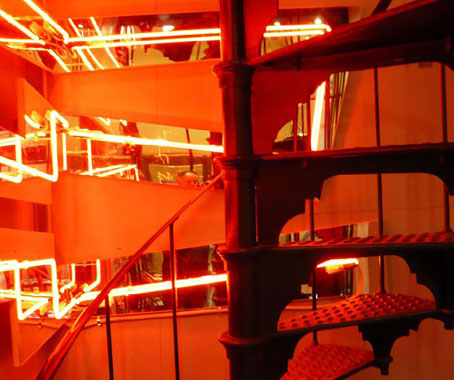
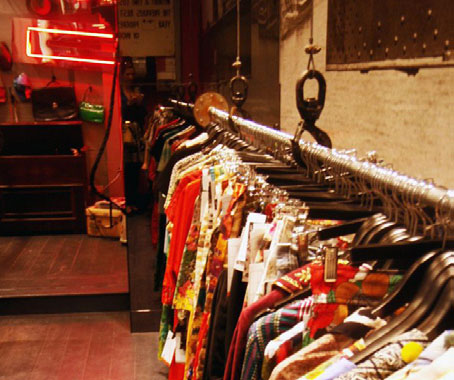
Hunter Gatherer deliberately brings the normally sub-cultural vintage movement to the normally conservative customer base of the Royal Arcade.
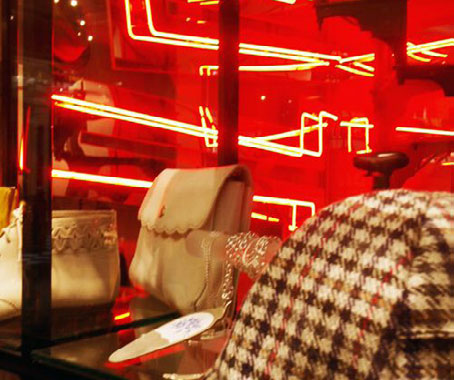
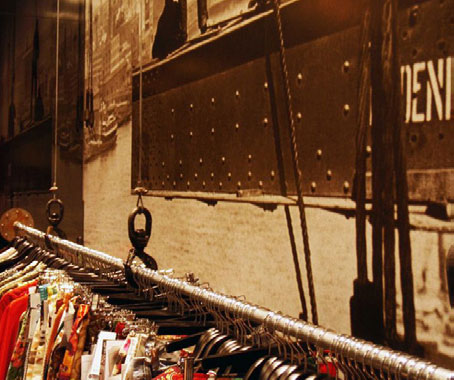
The Retail Design Institute awarded second place to Juicy Design in collaboration with David Caon, for their Audio Technica store in Westfield Sydney.
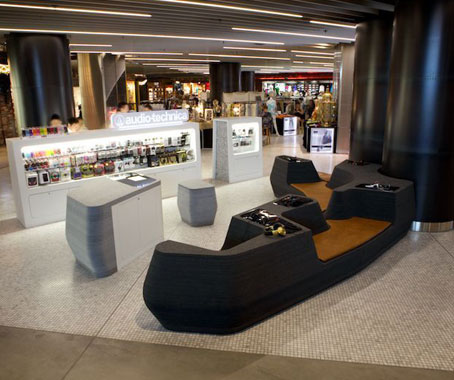
Juicy and Caon created an immersive, interactive space for the Japanese headphone company, featuring ’soundscape lounges’ made of layers of Woven Image EchoPanel. The fit-out provides an ideal way for Audio Technica to demonstrate and sell its products.
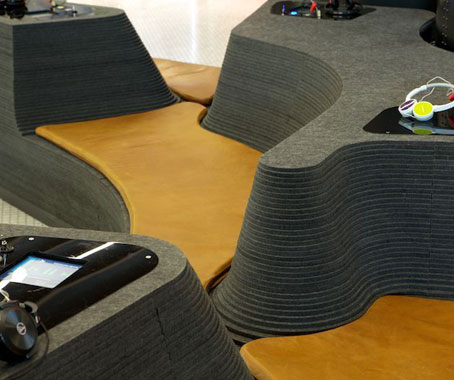
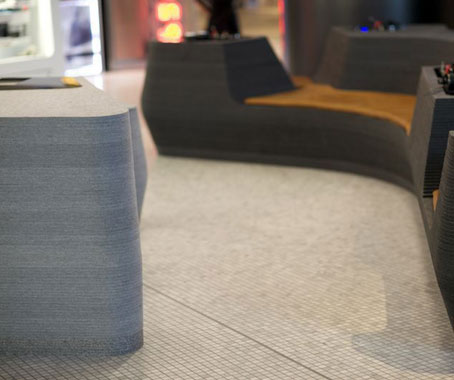
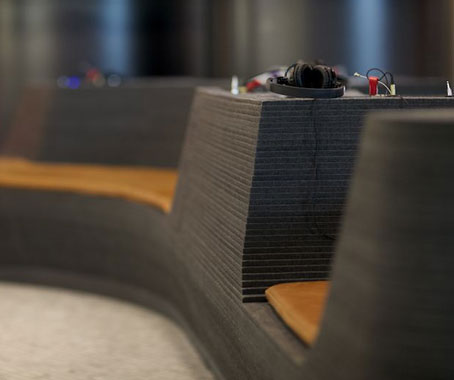
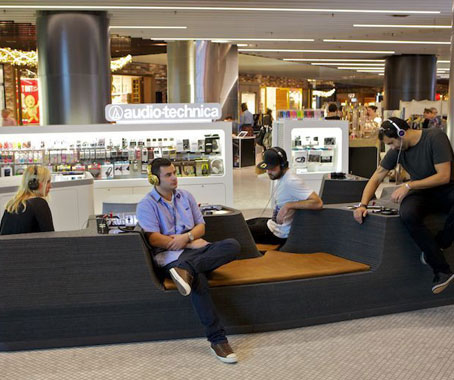
First place was awarded to Ryan Russell for Russell & George, for his design of the Crumpler Doncaster store, which reinvents the notion of a traditional retail interior.

Russell designed the space to be considered more a woven object than a store. The traditional transparent shopfront becomes a changing, dynamic element that changes with the viewer’s perspective.
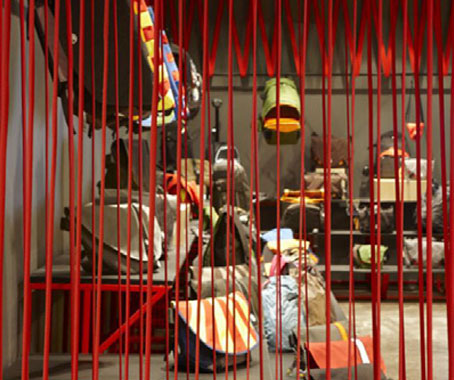
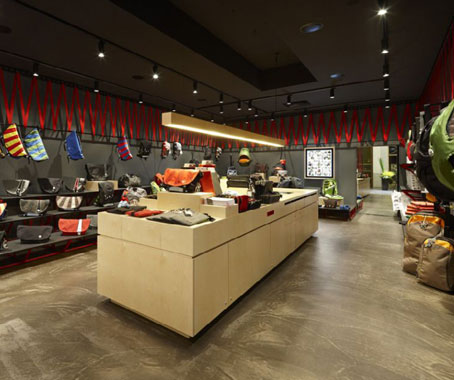
Retail Design Institute
retaildesigninstitute.org.au
INDESIGN is on instagram
Follow @indesignlive
A searchable and comprehensive guide for specifying leading products and their suppliers
Keep up to date with the latest and greatest from our industry BFF's!

Rising above the new Sydney Metro Gadigal Station on Pitt Street, Investa’s Parkline Place is redefining the office property aesthetic.
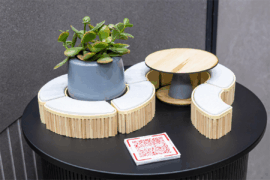
From the spark of an idea on the page to the launch of new pieces in a showroom is a journey every aspiring industrial and furnishing designer imagines making.
Indesign Publishing’s Editorial Director, Paul McGillick reports on his visit to the 2010 International Furniture Fair Singapore where he was also a judge for the Best Exhibits Awards.
Nicky Lobo was on the beat in Surry Hills Central during Saturday in Design. Here are her top picks from the day.
Kohlberg Kravis Roberts Australia, in Circular Quay, has undergone a corporate office fit out. The 420-m2 project features solid mahogany and energy efficient dynalite controls. The development was completed in October 2008. (Photo: Tyrone Branigan). The Patterson Group has also finished a fit out for The National Heart Foundation. The 170-m2 project is located at […]
The internet never sleeps! Here's the stuff you might have missed

The FlexiFlange leak control flange is set to revolutionise the task of installing drainage systems alongside vertical surfaces like walls and floor junctions.

Professor of architecture, academic, television presenter and much else besides, Anthony Burke joins Timothy Alouani-Roby in Sydney for a live audience discussion about housing and his globetrotting story in architecture.
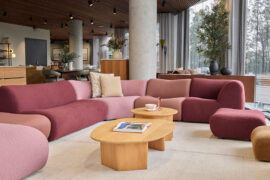
Poised at the intersection of design and service, King Trade has launched a new dedicated hub in Bondi Junction, which offers tailored product, service and pricing for architects and interior designers.
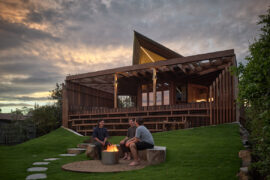
Recognised as a winner at the INDE.Awards 2025, Barton Taylor has received The Photographer – Residential accolade. His photographic work on Cake House captures the soul of a coastal icon reimagined, blending light, texture and atmosphere into a compelling visual narrative.